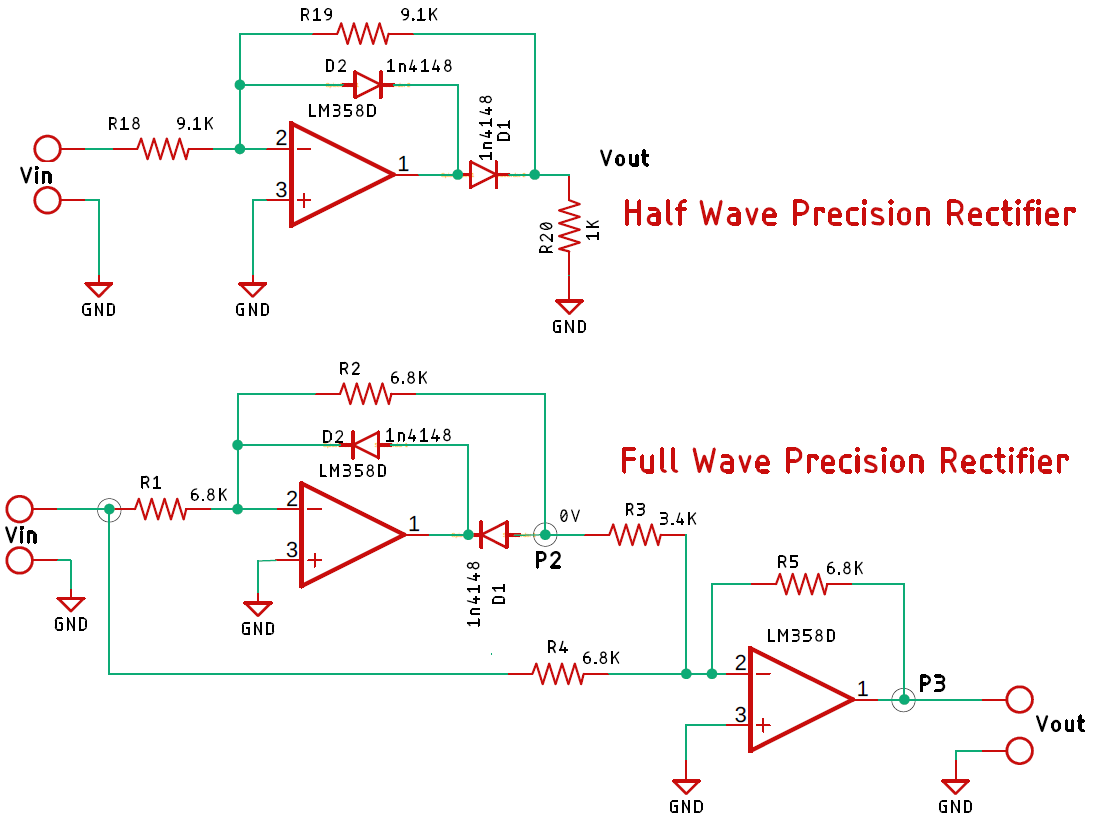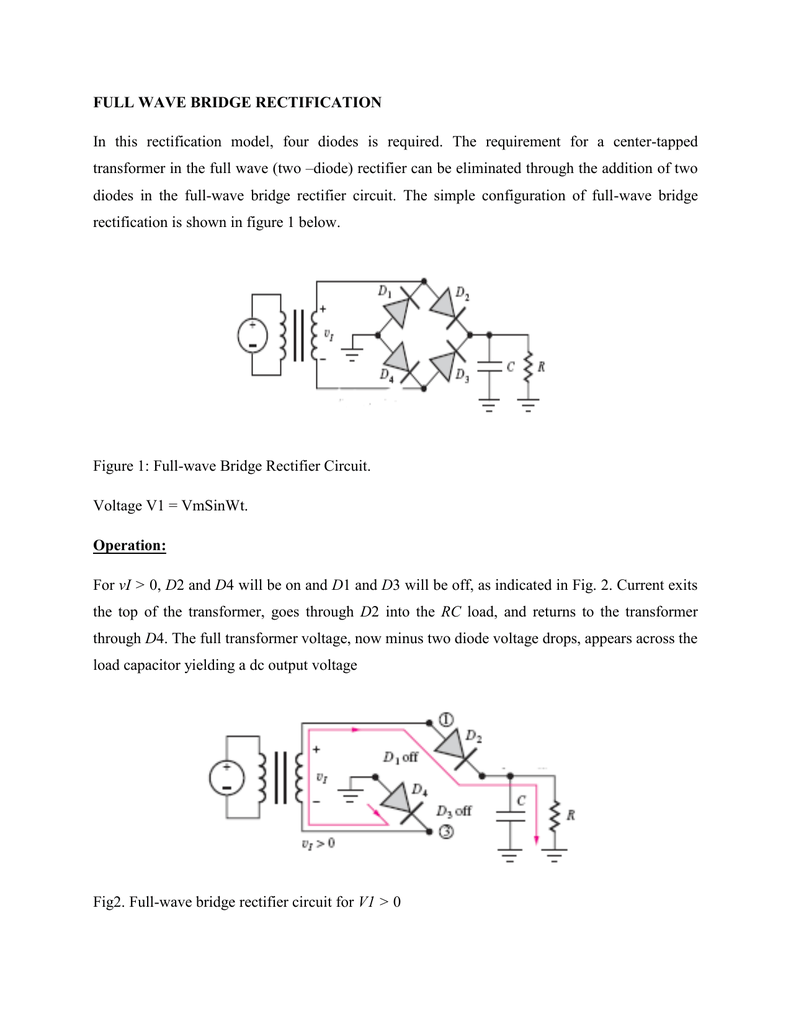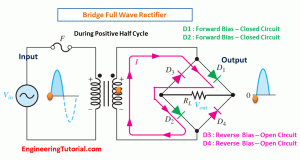
Bridge Rectifier OperationĪs we discussed above, a single-phase bridge rectifier consists of four diodes and this configuration is connected across the load. Suppose the microcontroller works at 5V DC, but the output after the bridge rectifier is around 16V, so to reduce this voltage, and to maintain a constant level – no matter voltage changes in the input side – a voltage regulator is necessary. The last stage of this regulated DC supply is a voltage regulator that maintains the output voltage to a constant level. This capacitor rating also depends on the output voltage. Filtering is normally performed with one or more capacitors attached across the load, as you can observe in the below figure wherein smoothing of the wave is performed. Since the output after the diode bridge rectifiers is of pulsating nature, and for producing it as a pure DC, filtering is necessary.

It is responsible for producing unidirectional or DC current at the load by conducting a set of diodes for every half cycle of the input signal. Choosing a particular diode or any other switching device for a corresponding rectifier needs some considerations of the device like Peak Inverse Voltage (PIV), forward current If, voltage ratings, etc. The next stage is a diode-bridge rectifier which uses four or more diodes depending on the type of bridge rectifier. Most of the electronic projects use a 230/12V transformer to step-down the AC mains 230V to 12V AC supply. The first stage of the circuit is a transformer which is a step-down type that changes the amplitude of the input voltage. Generally, all these blocks combination is called a regulated DC power supply that powers various electronic appliances. The bridge rectifier circuit diagram consists of various stages of devices like a transformer, Diode Bridge, filtering, and regulators. But this circuit doesn’t need a center-tapped transformer so it resembles a low-cost rectifier. The main advantage of the bridge rectifier is that it produces almost double the output voltage as with the case of a full-wave rectifier using a center-tapped transformer. Similarly, D2 & D4 diodes will conduct electric current throughout a negative half cycle. The pairs of diodes like D1& D3 will conduct electric current throughout the positive half cycle. The arrangement of two diodes can be made in such a way that the electricity will be conducted by two diodes throughout every half cycle. Here load resistor is connected in between two terminals like C & D. Once the input signal is applied across the two terminals like A & B then the o/p DC signal can be attained across the RL. So, the size, as well as cost, will be reduced.

The main benefit of this design is the lack of an exclusive center-tapped transformer. The connection of these diodes can be done in a closed-loop pattern to convert the AC (alternating current) to DC (Direct Current) efficiently. This circuit can be designed with four diodes namely D1, D2, D3 & D4 along with a load resistor (RL).

The bridge rectifier construction is shown below.

Components’ ratings and specifications, breakdown voltage, temperature ranges, transient current rating, forward current rating, mounting requirements, and other considerations are taken into account while selecting a rectifier power supply for an appropriate electronic circuit’s application. Bridge Rectifierĭepending on the load current requirements, a proper bridge rectifier is selected. They can be constructed with four or more diodes or any other controlled solid-state switches. Bridge Rectifiers are widely used in power supplies that provide necessary DC voltage for the electronic components or devices. A Bridge rectifier is an Alternating Current (AC) to Direct Current (DC) converter that rectifies mains AC input to DC output.


 0 kommentar(er)
0 kommentar(er)
